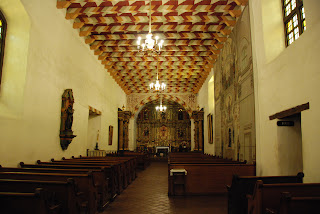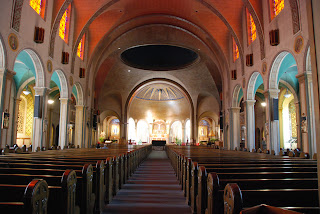Whenever I talk or think about Kazuo Ishiguro, I find myself wanting to say or think "Ishiguro Kazuo." That is, I find myself doing the mental thing I do when I read an English translation of a Japanese writer, which is to flip their names back into Japanese order. Thus I may read "Haruki Murakami," but I've trained myself to think "Murakami Haruki." Because, dude, that's who he is.
But Kazuo Ishiguro, as near as I can tell, isn't "Ishiguro Kazuo." I mean, I don't know anything about his personal life, but judging by what's public knowledge, he's British, not Japanese. Let me hurry to say that I'm not trying to set myself up as some kind of arbiter of authenticity, nor do I think he should be taken primarily as a representative of his culture, whatever that may be. He's himself first and foremost: born in Japan, raised in the UK from age 6. His parents named him 石黒一雄, but he seems to have grown up as Kazuo Ishiguro.

But what does that matter? From his third novel on, I'm not sure that it does. But in his first two novels, I think it matters a great deal, because he sets them in Japan, a Japan that he later admitted (see the bottom of that Wikipedia entry) was mostly imaginary. As it could only be, since not only was he not raised there, but he was writing about Japan in the 1940s and early 1950s, before his own birth.
These first two novels present difficulties because even though he is imagining Japan, he gets it largely right, which lends his imagination a certain authority. Or does he? I don't know. I first encountered Ishiguro in a class on Japanese literature - the prof ended the term by asking us to think about "diaspora" J-lit. So from the first I was thinking about these books in terms of accuracy - and hell, I don't know. I wasn't in Nagasaki during the Occupation: I don't know if the characters in A Pale View of Hills are acting authentically Japanese or like an Englishman's idea of Japanese. The question nags at me: I'll admit it: but I think it nags at me less because I think there's an answer and I don't know it than because it forces me to confront the fact that there can be no answer to that question, but no escape from it either. I've always felt that to formulate an "authentically" Japanese (or British, or American) behavior is to stereotype, essentialize, and I've always fought against it, but at the same time I'm not sure if it's possible to completely abstain from this kind of thinking. Ishiguro, I think, is aware of that: early in the book the narrator, a Japanese woman living in Britain, gripes at how the English think Japanese have a racial predilection for suicide - and yet the story she tells is full of suicides. In other words Ishiguro is highlighting a British stereotype of Japaneseness even as he's indulging it, perhaps even perpetuating it.
2.
Jim Emerson at Scanners talks about what he calls the Barton Fink Box Test. He quotes Joel Coen talking about the mysterious package in that masterpiece of a film:
The question is: Where would it get you if something that's a little bit ambiguous in the movie is made clear? It doesn't get you anywhere.I think we can even extrapolate from this a Barton Fink Box Ploy, whereby filmmakers, and novelists and whoever else, introduce a note of ambiguity precisely to remind you that what's at stake isn't really What's In The Box, but What Does The Box Mean. It's how the Coens shock you out of what's (also) a really good Hollywood noir so that you remember it's a
 lso a piece of arthouse existentialism. It masterfully turns the conversation away from the plot and toward the meaning of the events in the plot (meaning being, of course, something the Coens always deny in their interviews). "I'll show you the life of the mind."
lso a piece of arthouse existentialism. It masterfully turns the conversation away from the plot and toward the meaning of the events in the plot (meaning being, of course, something the Coens always deny in their interviews). "I'll show you the life of the mind."Ishiguro has a classic BFBP at the climax of A Pale View of Hills, where suddenly we wonder if two separate characters are really one and the same, if any of the events we've been told about really happened, if the narrator actually killed her own child... And of course it tantalizes us: I want to know if Etsuko and Sachiko are one and the same, if Keiko and Mariko are one and the same, etc.
But immediately I realize that this is Barton Fink's Box. Would knowing if Etsuko and Sachiko are one and the same make any difference? Whether or not they are, we can say that Etsuko feels some responsibility for her daughter Keiko's suicide, and she's in denial about it, that she feels some guilt for fleeing Japan for the UK over the wishes and expectations of her first husband and her child, and she's not talking about that. To put a finer point on it: either Etsuko is Sachiko, and she killed her daughter Mariko so she could be free to move to America with her lover, or she's not Sachiko, but only Etsuko, who forced her daughter Keiko to move to UK with her and her lover, in the process setting her daughter up for so much depression that she eventually kills herself. Same difference.
3.

Same could be said, I guess, about the question of the novel's authenticity as a depiction of Japan during the Occupation. The question is: is the novel an authentic depiction of Japan during the Occupation, or is it an Englishman's imagination of Japan during the Occupation. The answer to that question is eternally elusive, but knowing the answer wouldn't change anything. What we have is a penetrating examination of self-sacrifice, self-denial, and how it will fail at key moments; of the lies we tell ourselves to mask those moments of failure; of the undeniable need for self-fulfillment, for a chance at happiness, damn the consequences; and we have all of this in a sharply-evoked context of social upheaval that threatens or promises to revolutionize gender relations.
What we have, in short, is a novel full of insights. Whether those insights are ultimately Japanese or British is unanswerable. The answer is in the box - but the box itself is a fiction. There's nothing inside.






